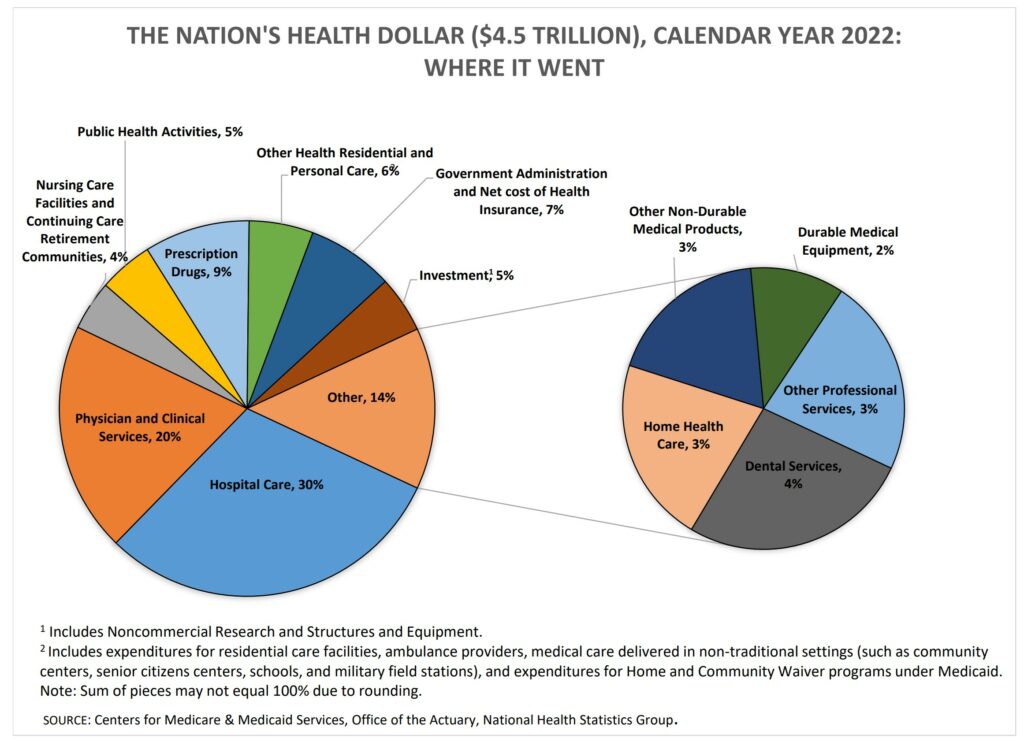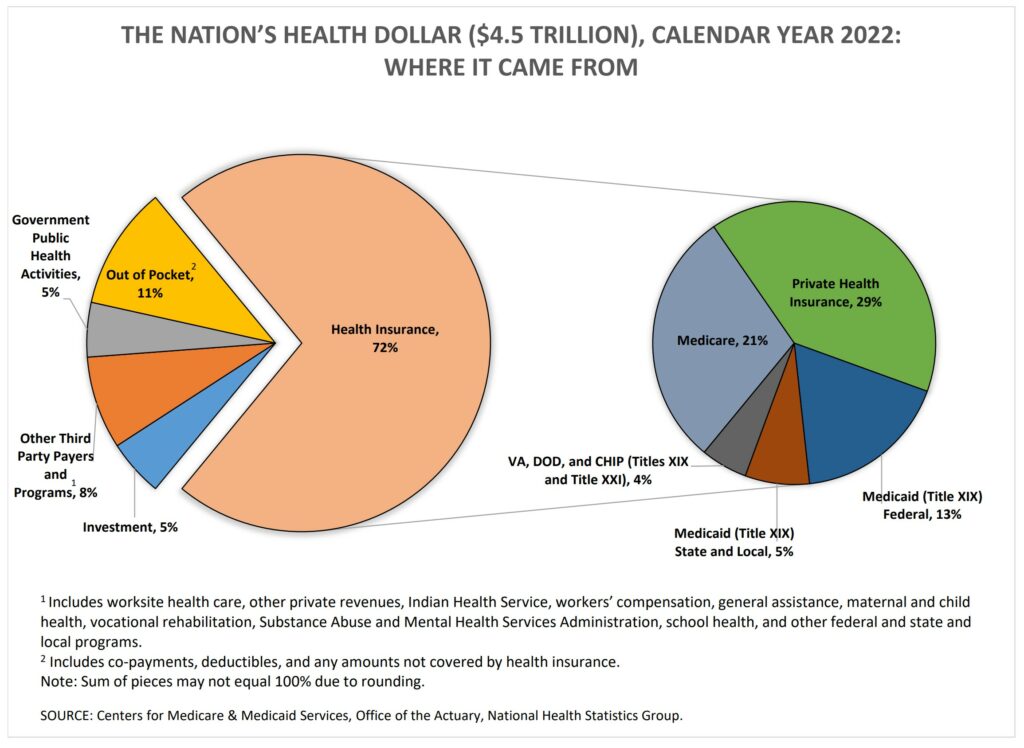I am attempting to present a simple way to portray the costs of healthcare in the US. Using pie charts, a bar chart, and a graph gets the measures of cost across and at the same time presents different discussion points. Merrill Goozner presents the same data as did Peterson and draws a different conclusion. Healthcare costs do not appear to be outstripping economic growth. The issue still remains that we can manage our healthcare costs in a more efficient way. The other issue presented here? CMS and CBO reporting has to be accurate as it drives what the government does. The Nation’s Health Dollar (.3 Trillion), Calendar Year 2022: Where It Came from and Where it Went, (cms.gov) Where Did We Spend the Money for Healthcare? From Where Did
Topics:
Bill Haskell considers the following as important: Healthcare, US EConomics
This could be interesting, too:
NewDealdemocrat writes JOLTS revisions from Yesterday’s Report
Bill Haskell writes The North American Automobile Industry Waits for Trump and the Gov. to Act
Bill Haskell writes Families Struggle Paying for Child Care While Working
Joel Eissenberg writes Time for Senate Dems to stand up against Trump/Musk
I am attempting to present a simple way to portray the costs of healthcare in the US. Using pie charts, a bar chart, and a graph gets the measures of cost across and at the same time presents different discussion points. Merrill Goozner presents the same data as did Peterson and draws a different conclusion. Healthcare costs do not appear to be outstripping economic growth. The issue still remains that we can manage our healthcare costs in a more efficient way. The other issue presented here? CMS and CBO reporting has to be accurate as it drives what the government does.
The Nation’s Health Dollar ($4.3 Trillion), Calendar Year 2022: Where It Came from and Where it Went, (cms.gov)
Where Did We Spend the Money for Healthcare?
From Where Did the Funding for Healthcare Come?
A tale of Two Healthcare Spending Charts and Why.
Why Are Americans Paying More for Healthcare? pgpf.org.
Generally, healthcare spending can be thought of as a function of price (dollars charged for healthcare services) and utilization (the amount of services used). There are several underlying factors that can increase price and utilization, thereby boosting spending on healthcare. The most notable of those factors are an aging population and healthcare prices.
An Aging Population
The share of the U.S. population age 65 and over has increased over the past several years, rising from 14 percent in 2012 to 17 percent in 2022. Furthermore, that number is projected to continue climbing – reaching 21 percent by 2032. Since people age 65 and over, on average, spend more on healthcare than any other age group, growth in the number of older Americans is expected to increase total healthcare costs over time.
Why do the health economists keep getting it wrong? GoozNews, Merrill Goozner. June 2023
Merrill: For more than a decade, CMS and CBO consistently overestimated the growth in health care spending, which undermines efforts to spend more on health-related social needs.
Earlier today, economists at the Centers for Medicare and Medicaid Services released their annual projection for health care spending over the next decade. After noting that spending fell to 17.4% of gross domestic product in 2022, which is about where it’s been for most of the past decade except during the Covid years, they predicted spending by Medicare, Medicaid, private insurance and other public and private entities would once again resume its upward trajectory this year and reach nearly 20% of GDP by 2031.
Hmmm. Where have I heard that before? I keep a file containing past CMS projections so it was fairly easy for me to check. The earliest article in my file dates from February 2008, when health care made up 16% of the overall economy. That year, CMS predicted spending would reach 20% of GDP by 2017.
Let’s go to the videotape. Seven years after President Obama and the Democratic Congress passed the the 2010 Affordable Care Act, which included numerous provisions aimed at reining in health care spending, it had only reached 17.7% of GDP.
The CMS prognosticators during the first year of the Trump administration didn’t do much better. In 2017, they predicted healthcare would reach nearly 20% of the economy by 2025. Now they’re saying it won’t reach that level until 2031.
To be fair, healthcare spending did spike to nearly 20% of GDP in 2020. But that was only because the pandemic dramatically slowed overall economic activity while the government poured cash into hospitals and physician offices to keep them running. It took only two years for it to fall back into the 17-18% of GDP range as the economy recovered and the stimulus was withdrawn.
One could conduct a similar exercise with healthcare spending projections from the Congressional Budget Office. Fortunately, I don’t have to do the calculations because Sen. Sheldon Whitehouse (D-RI), chairman of the Senate Budget Committee, asked CBO director Phillip Swagel that very question.
Swagel replied in a letter earlier this year that CBO overestimated mandatory spending for health care in the 2010–2020 period by 9%. He wrote: “Most of the overestimate for the Medicaid and Medicaid programs stemmed from an overestimate of spending per beneficiary, not an overestimate of the number of beneficiaries.”
AB: There are repercussions for overestimating spending for health care.
This systematic overestimation of future health care costs by government economists has far-reaching consequences. When CMS gets it wrong, organizational planners around the country are given a faulty notion of how much money will be flowing through the system, which could lead to a misallocation of resources.
When CBO gets it wrong, Congresspersons get a faulty notion of what resources are available to spend on other programs. It also feeds the GOP’s hysteria around balancing the budget, which undermines political support for other social programs, including those that would actually improve the health of the nation.
AB: If you get a chance, read the CBO letter which gives a good review of healthcare spending and their miscalculations.




